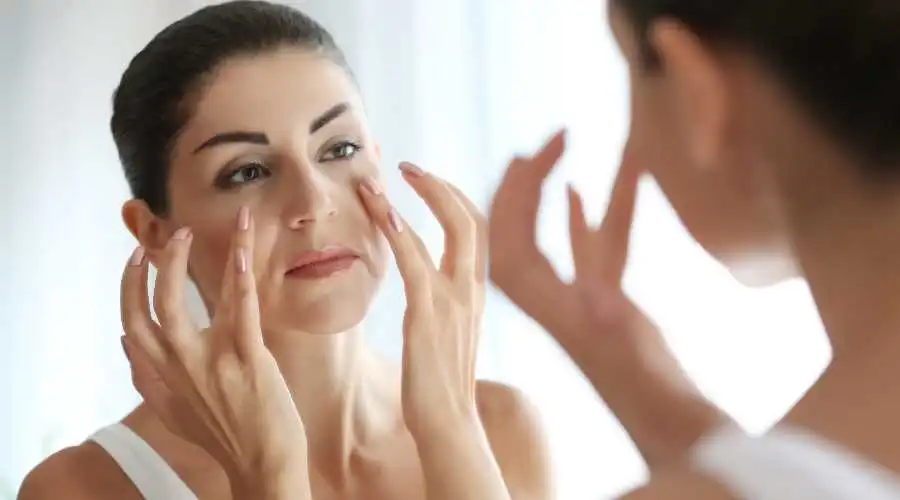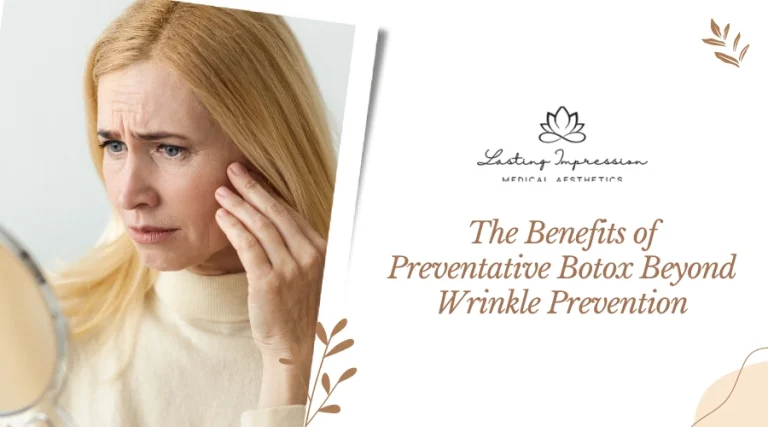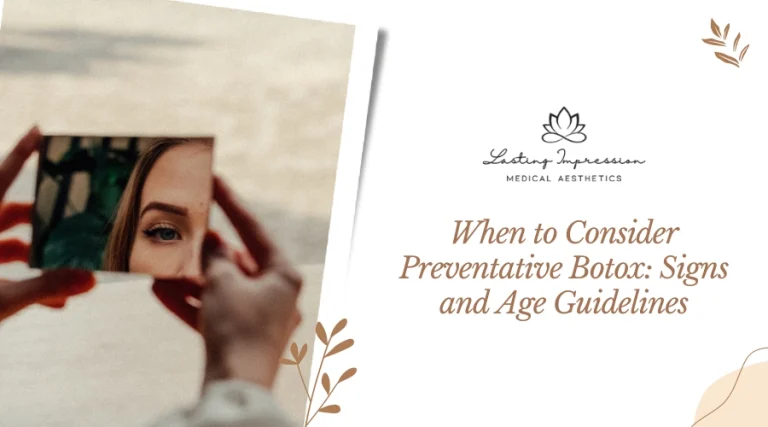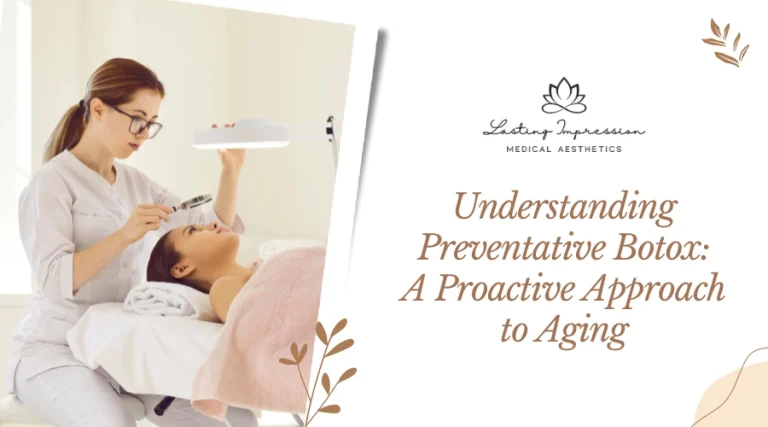To attain the outcomes you want through Dysport, proper aftercare is essential. Our medical professionals have developed a list of suggested best practices for caring for your skin following injections, which helps guarantee you consistently obtain the best outcomes. You’ll be less likely to have side effects and more likely to enjoy your results if you adhere to our Dysport aftercare advice. True win-win situation.
What should I understand about Dysport?
Despite being only marginally more recent on the market, Dysport doesn’t garner as much attention as its sister cosmetic injectable, Botox. Both drugs are “neuromodulators,” which means they can affect the body’s capacity to communicate between nerves.
Both Botox and Dysport slow down and eventually stop the brain from directing certain muscles to move when injected into the muscles beneath the skin. In the absence of activity, the skin over the muscles relaxes, giving them a more supple, fine-lined, and wrinkle-free appearance.
How are Dysport and Botox different?
What target areas they are most adept at treating is the key distinction between the two. While some studies claim that Dysport and Botox produce outcomes that are almost identical, others assert that Dysport is superior to Botox for treating forehead lines and crow’s feet. Find out from your doctor which injectable will be more successful in treating the conditions that worry you the most.
Your Dysport injections should last three to four months before starting to lose their effectiveness. Regular use can help you develop a better sense of when to book your follow-up session to prevent the recurrence of fine lines and wrinkles.
What are some recommended practices for Dysport aftercare?
Now for the finest aftercare procedures for Dysport. Although your provider will offer you with even more detailed instructions, following these broad guidelines can help you get the greatest results.
Avoid touching the injection sites.
We urge you to do everything in your power to resist the impulse to reach for your face in the mirror after getting Dysport, even though we recognize how alluring it might be. It can have a detrimental effect on your outcomes to touch the injection sites, especially in the first four hours after leaving our office.
Consider it this way: Our skin care specialists employ all of their expertise to design a personalized Dysport injection plan that aids in your achievement of the outcomes you seek. Your areas of concern have been identified, and the drug has been injected precisely into those muscles to reduce fine lines and wrinkles there.
There’s a potential that touching your skin will unintentionally induce the Dysport to leave those muscles and go to other parts of your face. Unintentional Dysport migration can result in less-than-desirable outcomes as well as other, more serious problems including drooping eyelids.
Make every effort not to touch your face for at least four hours after receiving a Dysport injection. Following that, we advise using only light pressure. For instance, for a few days, refrain from washing your face and instead gently pat your skin dry after a shower.
Recognize any possible adverse effects.
Having a general understanding of the potential side effects you may experience is another essential aspect of Dysport aftercare. This information can assist you in differentiating between common side effects and more serious warning signs.
All drugs have the potential for side effects, even though Dysport is thought to be quite safe when administered by qualified, certified professionals (like our knowledgeable Skin Pharm skin care specialists).
The majority of the negative effects following a Dysport injection are mild and transient, which is good news. All of these adverse effects are to be expected after receiving any form of injection, particularly when it is done on a delicate location with thin skin. The following are a few of the most typical, anticipated problems at the injection sites:
- Redness
- Sensitivity
- Swelling Tenderness
It’s more likely than not that you’ll experience at least one of those fleeting reactions, which are more a product of the needle than the Dysport itself. These side effects shouldn’t persist for more than a day or two, depending on how reactive and sensitive your skin is, and the most start to go away within a few hours.
If you already have a tendency to easily bruise, you might encounter bruising as another potential side effect. Be sure to mention this to your doctor prior to your injections.
After your appointment, bruising may persist for up to two weeks. Applying an ice pack will assist to reduce swelling and the possibility of bruising. However, you should always use an ice pack after getting injections and attempt to wait a few hours before using one so that it doesn’t come into contact with your skin directly. Ice packs shouldn’t be used for longer than 15 minutes at a time.
All things considered, there is always a chance that you could experience more severe adverse effects from Dysport (particularly if this is the first time you’ve had the injections). Muscle weakness, pressure in the chest, difficulty breathing, difficulty swallowing, speaking, or having an allergic response that results in hives should all be reported right away or cause you to seek emergency medical help.
3. Provide your doctor with a complete medical history.
Ensure that your provider is familiar with your entire medical background. Any drugs you routinely use, even over-the-counter ones, should be listed.
Dysport may be relatively safe, but it is still a drug, which means there is always the potential for a medication reaction to occur. Plus, some medications (like blood thinners, aspirin and Ginkgo Biloba) can increase the potential for specific side effects like bruising. Sometimes, our providers may ask you to contact your primary care provider for clearance before performing your injections.
While this may seem like extra work, it’s about keeping you safe and getting you your desired results.
4. Don’t take a nap right away.
Sounds silly, but it’s true! Like treating yourself to Dysport injections, napping can be an excellent form of self-care. We completely support you visiting our office as part of your “me day!” However, once your appointment is over and you head back home, fight the urge to hit the couch and take a quick nap.
Napping, or anything that involves you lying flat for long periods of time, should be avoided for at least four hours after your appointment. Like touching your face, lying flat can accidentally cause the Dysport to shift in the muscles. This movement is caused by the extra pressure this position puts the muscles under.
Plus, how often do you wake up from a nap in the same position you fell asleep in? You and your skin care provider worked hard to find just the right places to create optimal results, so try to stay upright.
5. Avoid makeup, too.
If you’re in the majority of people who end up with at least some redness or bruising after your Dysport injections, don’t pick up that foundation just yet. Although it may be hard to let your skin go bare after your appointment, it’s best to let your skin work itself out without covering it up. Plus, applying foundation (and other all-over facial cosmetics like BB or CC cream) requires pressure, whether you prefer to do it with your fingertips, a blender sponge or a brush.
It shouldn’t take your skin too long to heal from your injections, so take a deep breath and show your natural face to the world (or stay inside and let your skin heal — no judgment from us!).
6. Don’t head straight for the gym, either.
If you took the day off to get your Dysport injections and are trying to make the most of it, your to-do list might include hitting the gym. Working out is great for keeping you looking and feeling your best, but in terms of Dysport after care, you’ll want to reschedule your gym time or personal trainer appointments for another day.
The reason for skipping a gym session is twofold. We’ve discussed the potential risks of overdoing it in the few hours after your injections — you don’t want your Dysport to migrate into other parts of your face.
But exercise also has one additional drawback: it increases the blood flow throughout the body, including the skin. More circulation to your injection sites increases the likelihood of bruising as well as Dysport migration. Instead of heading to the gym, head to your couch and binge-watch your favorite series (while sitting up, of course — no napping).
To sum things up…
Appropriate Dysport aftercare is the key to minimizing side effects and maximizing results. When you follow the above tips laid out by our amazing skin care providers, you’ll be able to heal quickly and get the results you’re looking for with minimal effort!







